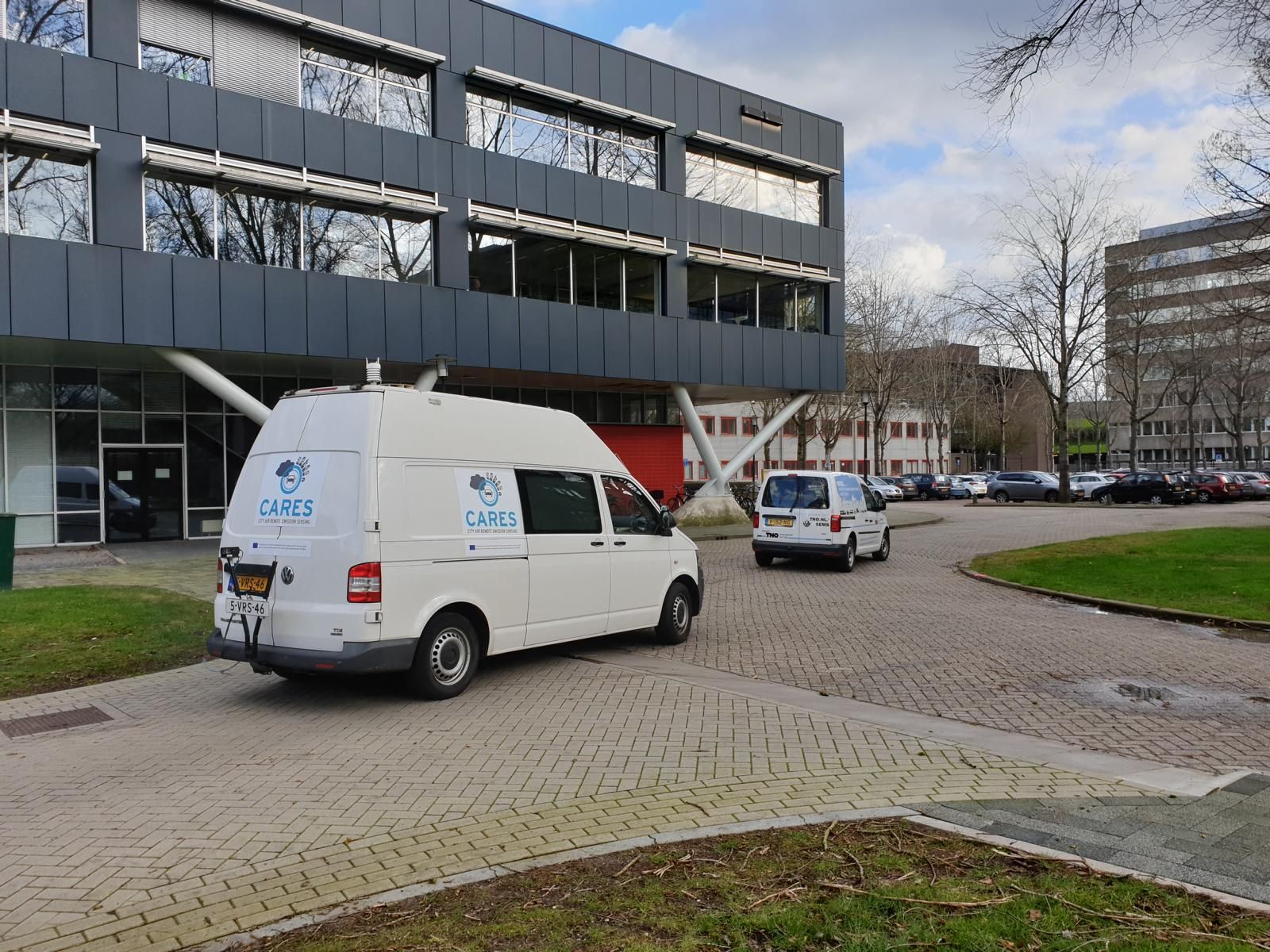Scientists meet at TNO Utrecht to develop plume chase technology
June 9, 2020
Scientists met at TNO’s research centre in Utrecht for a two-week measurement study to further develop the innovative plume chase technology. This non-intrusive measurement technique uses a ‘plume chase’ vehicle, equipped with analytical instrumentation, to follow a vehicle of interest and measure emissions within its dispersing plume.
At the start of the study, several groups of scientists involved in the CARES project arrived in Utrecht and installed their instruments inside TNO’s plume chase van. Instruments capable of detecting gaseous species such as NO2 and CO2 were set up alongside those used to characterise particle emissions from vehicles.
Eleven experiment sessions were then arranged, designed to test various sampling positions and instrument configurations. The first six sessions focused on instrument validation, which involved the plume chase van following SEMS (smart emission measurement system) equipped passenger cars. Both low and high emitting cars were followed, with the data gathered being used to optimise the plume chase setup and data analysis method. During the remaining five sessions, randomly selected vehicles were measured in the vicinity of Utrecht. The measurement setup was presented to the CARES consortium and to the Dutch authorities.
On 27th February, at the end of the experiments, a wider group of CARES participants gathered at TNO Utrecht for a one-day meeting. The aim of the meeting was to discuss the upcoming test track experiments to be held at Test Centre Lelystad in the Netherlands. These characterisation experiments will bring together the three remote emission sensing technologies (plume chase, point sampling and commercial remote sensing) to determine the advantages and limitations of the newly developed techniques.
The first half of the meeting focused on preparations for the test track experiments. The key logistics were how to best to set up the instruments and which vehicle types to measure. It was also necessary to discuss safety instructions for the test track, who would drive the test vehicles, and how the data acquisition software would operate. The latter half of the meeting focused on the schedule of experiments at the test track. The experiments will evaluate the performance of the different remote emission sensing technologies across a range of driving conditions (i.e. different speeds, accelerations, engine loads) and vehicle conditions (e.g. DPF removed, SCR emulator).
During the meeting there was also a chance for the CARES participants to have a look at the instruments installed inside the plume chase vehicle and ask the researchers about their progress over the last few weeks.



